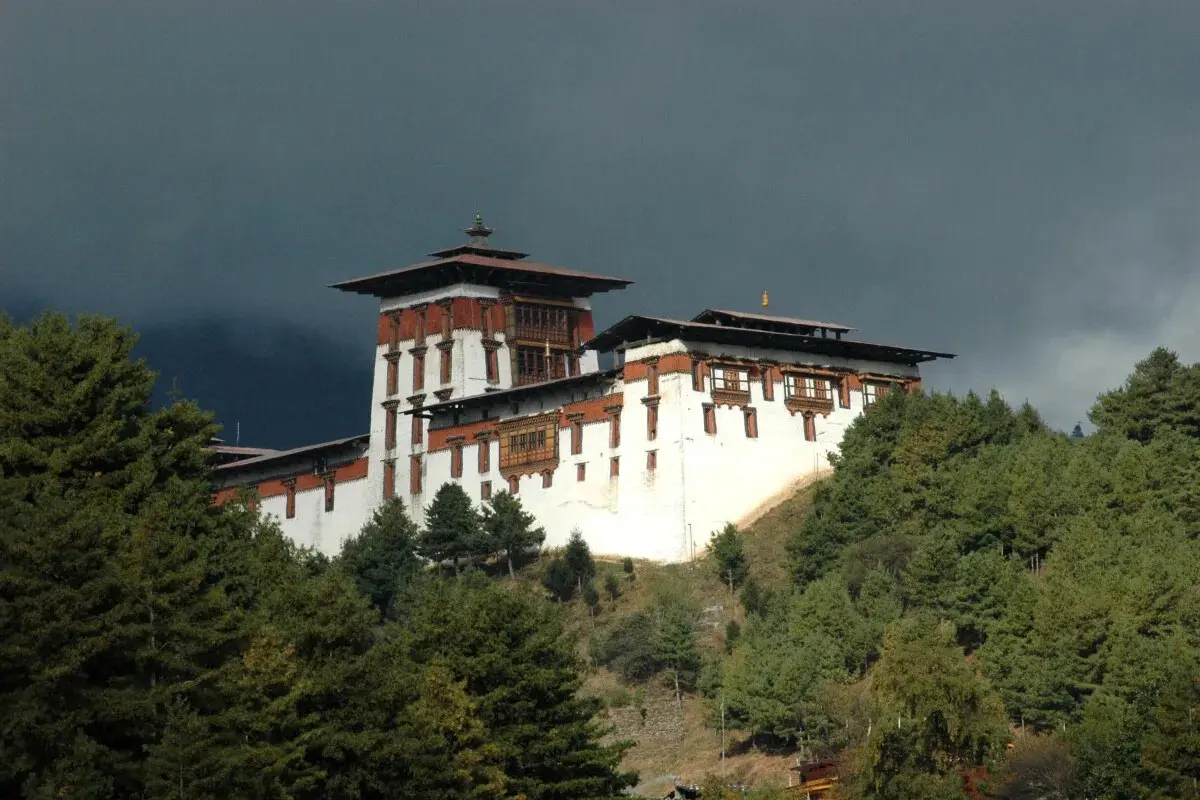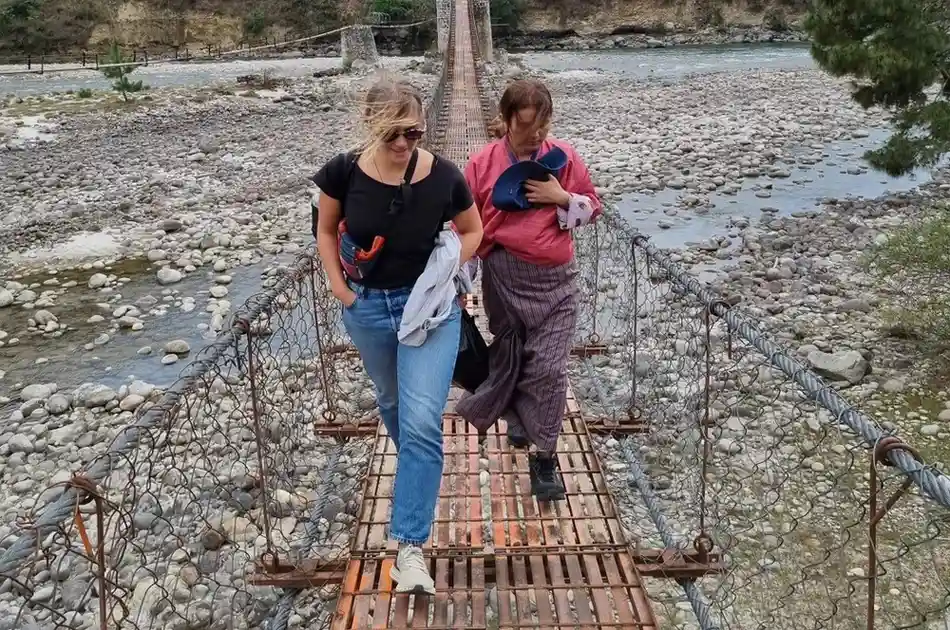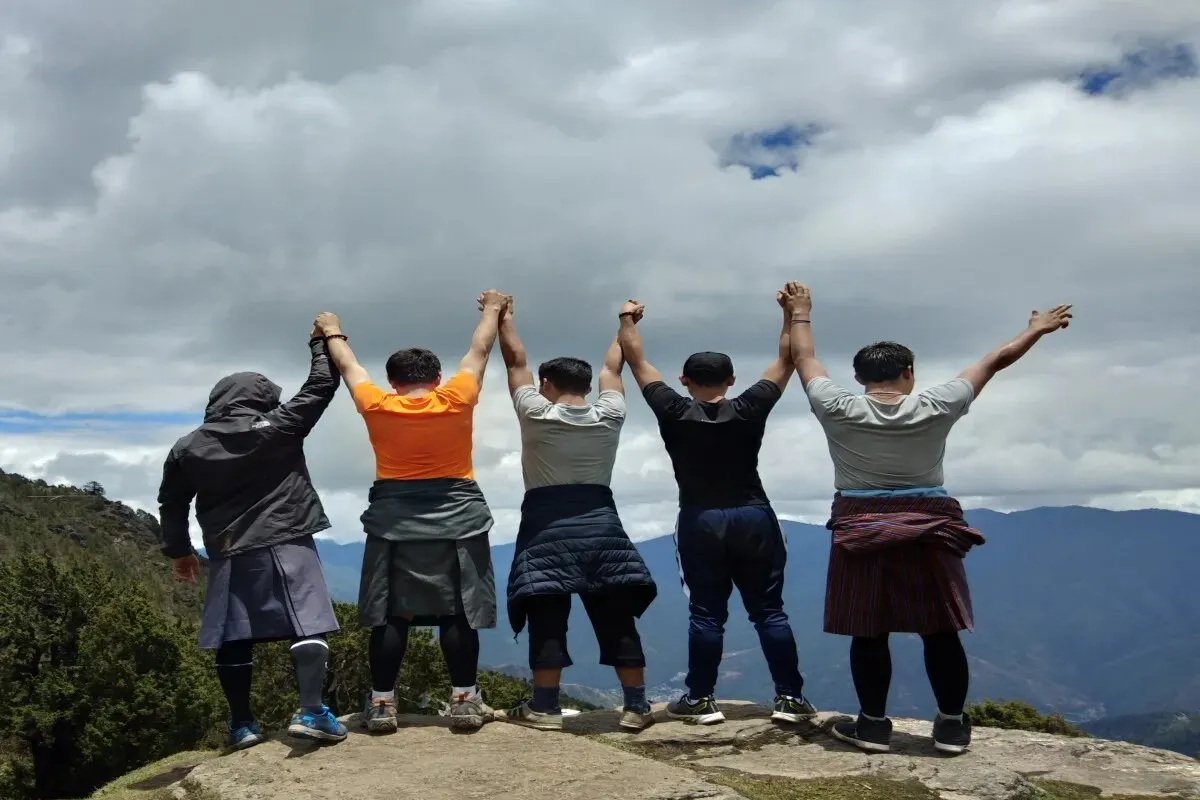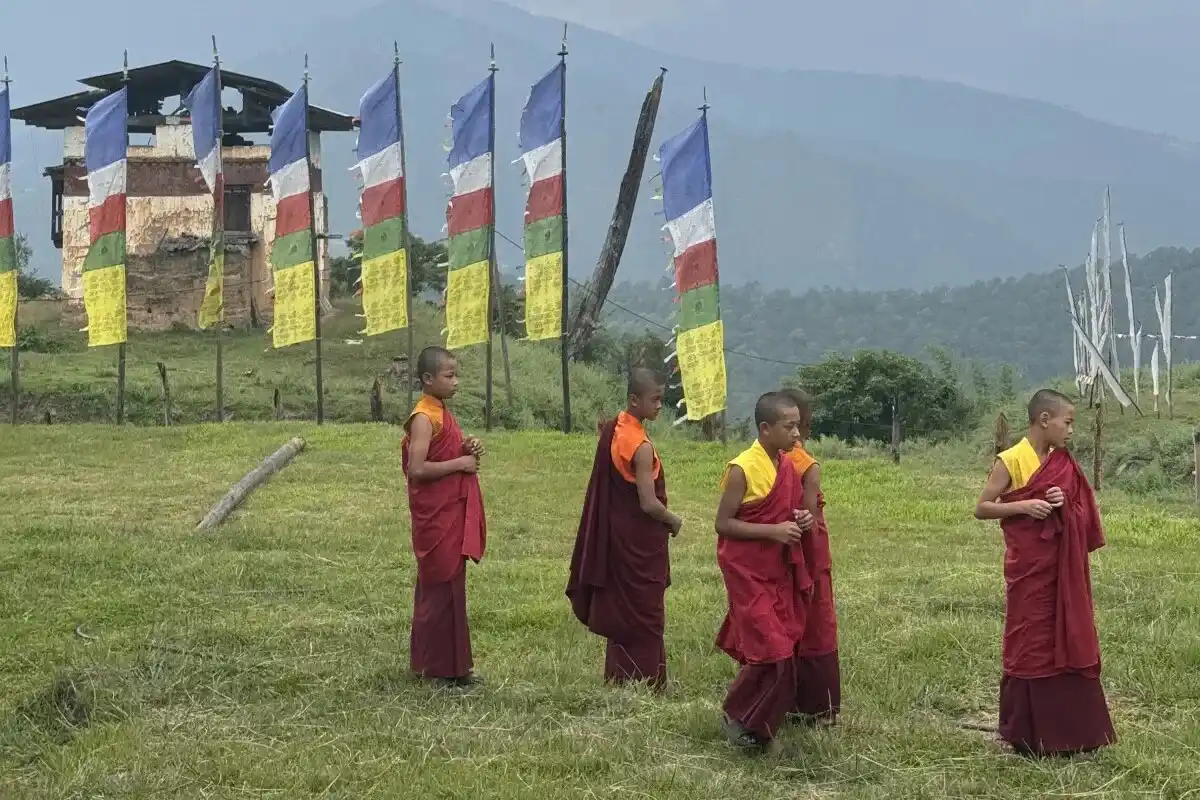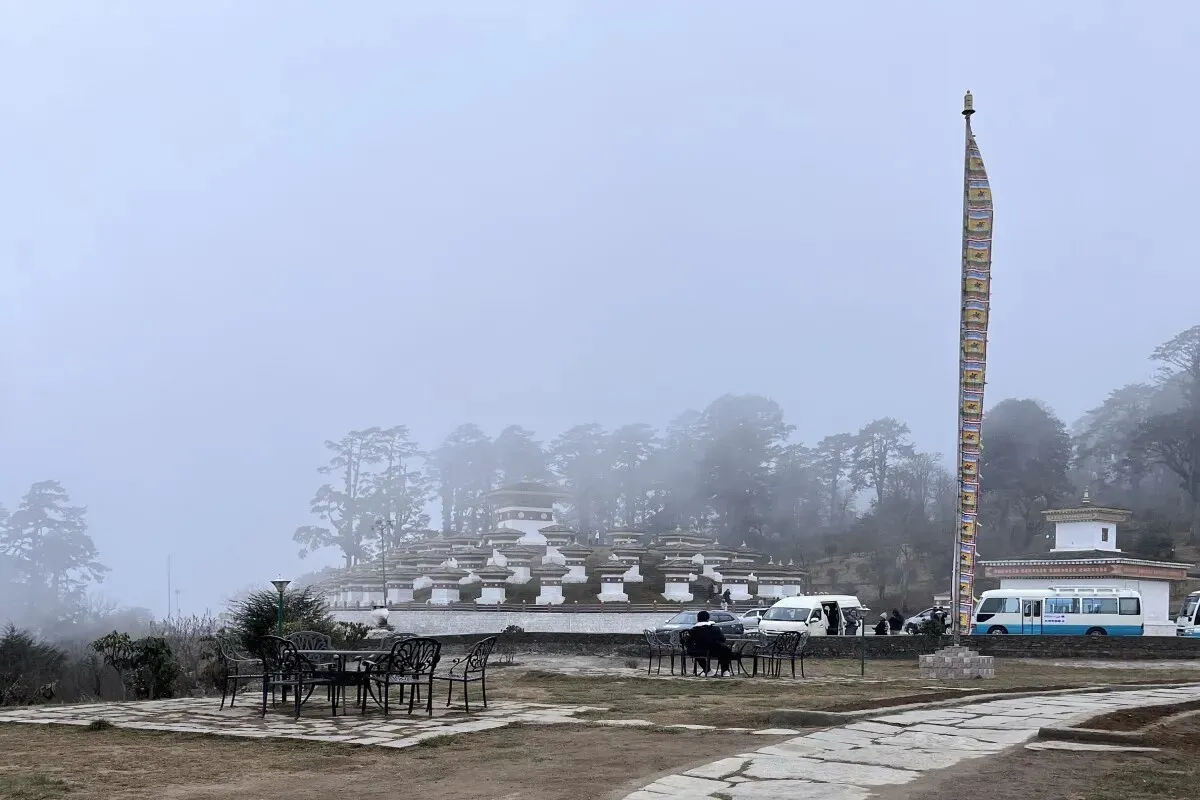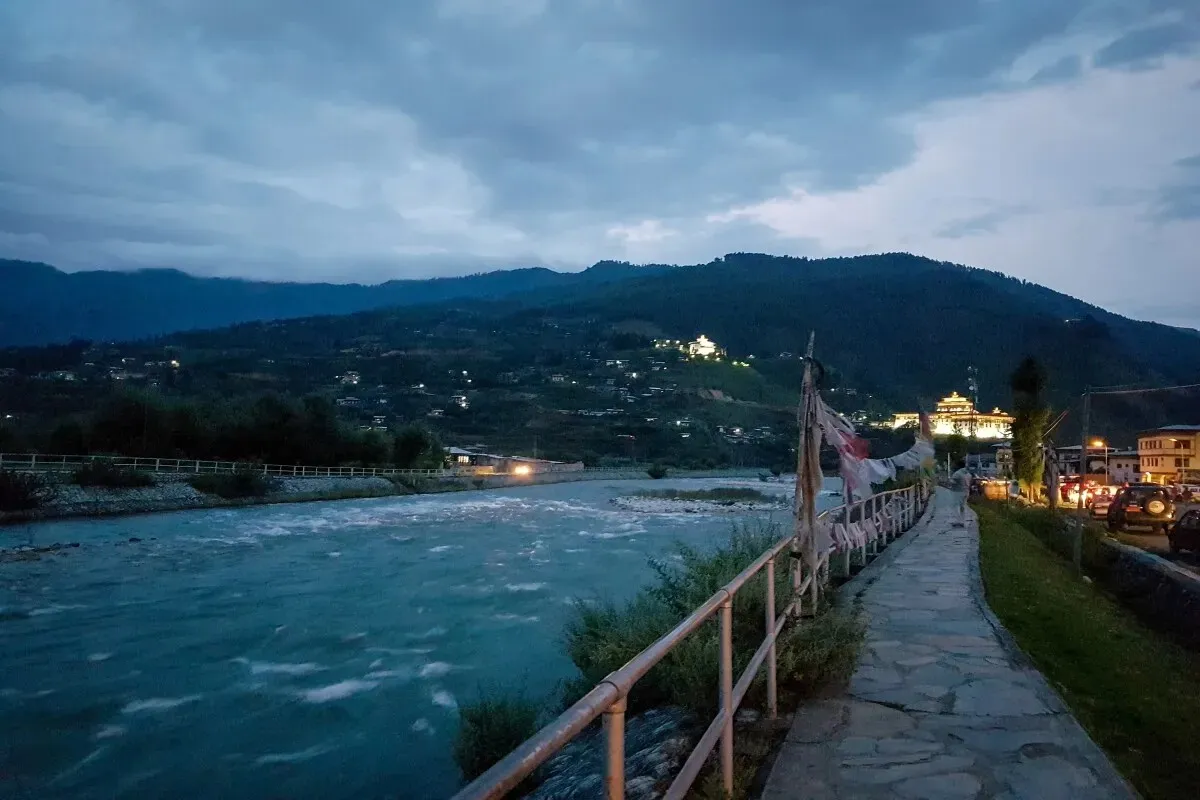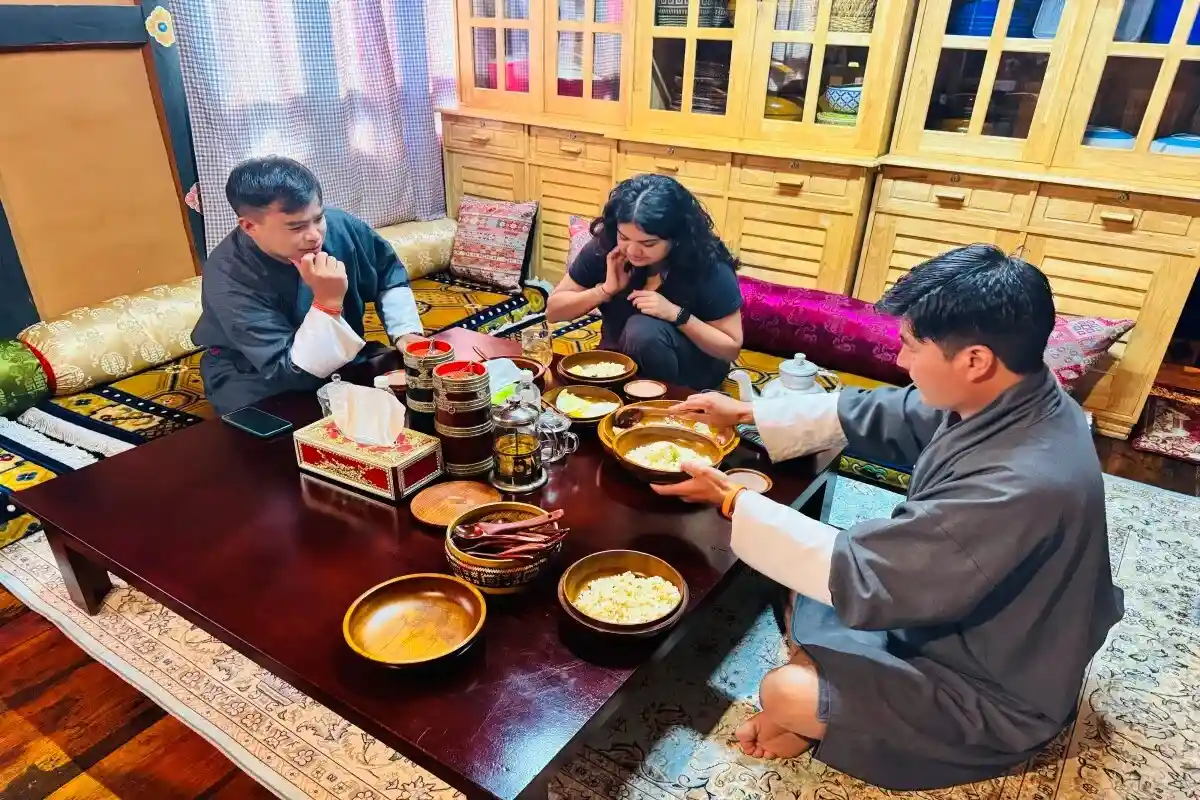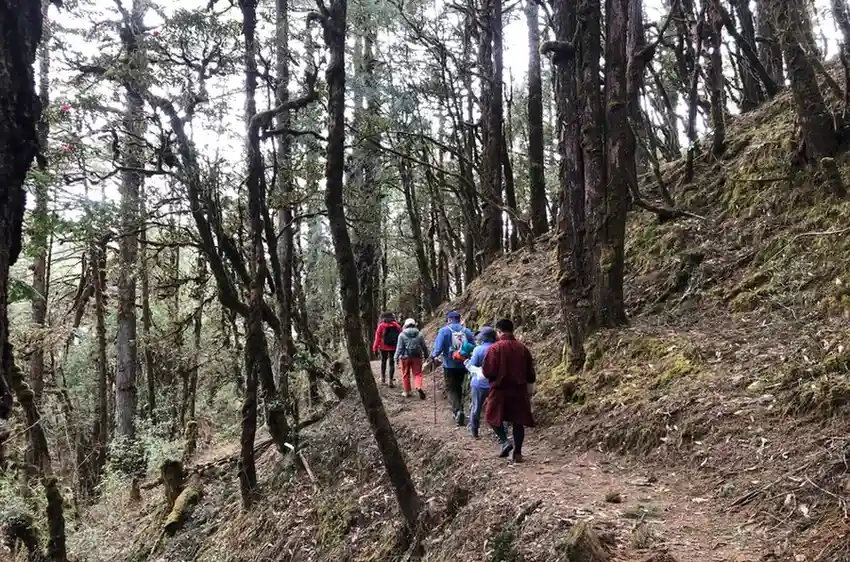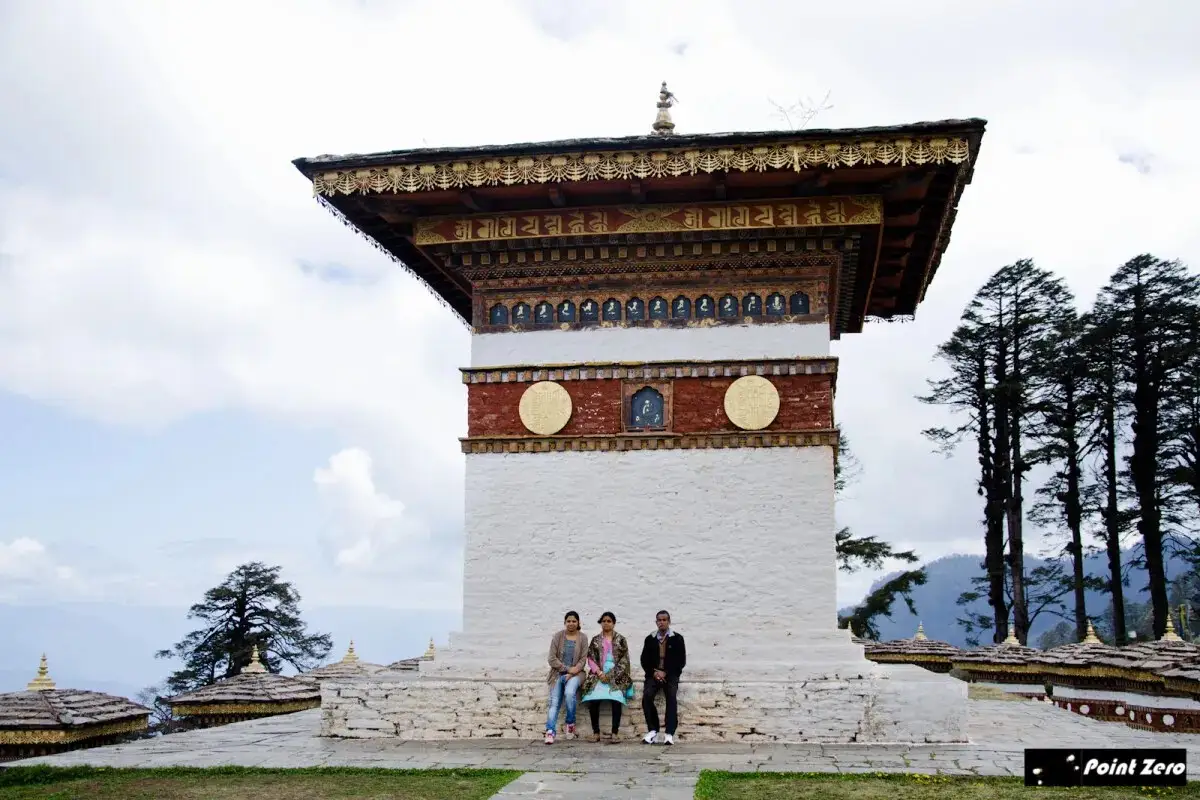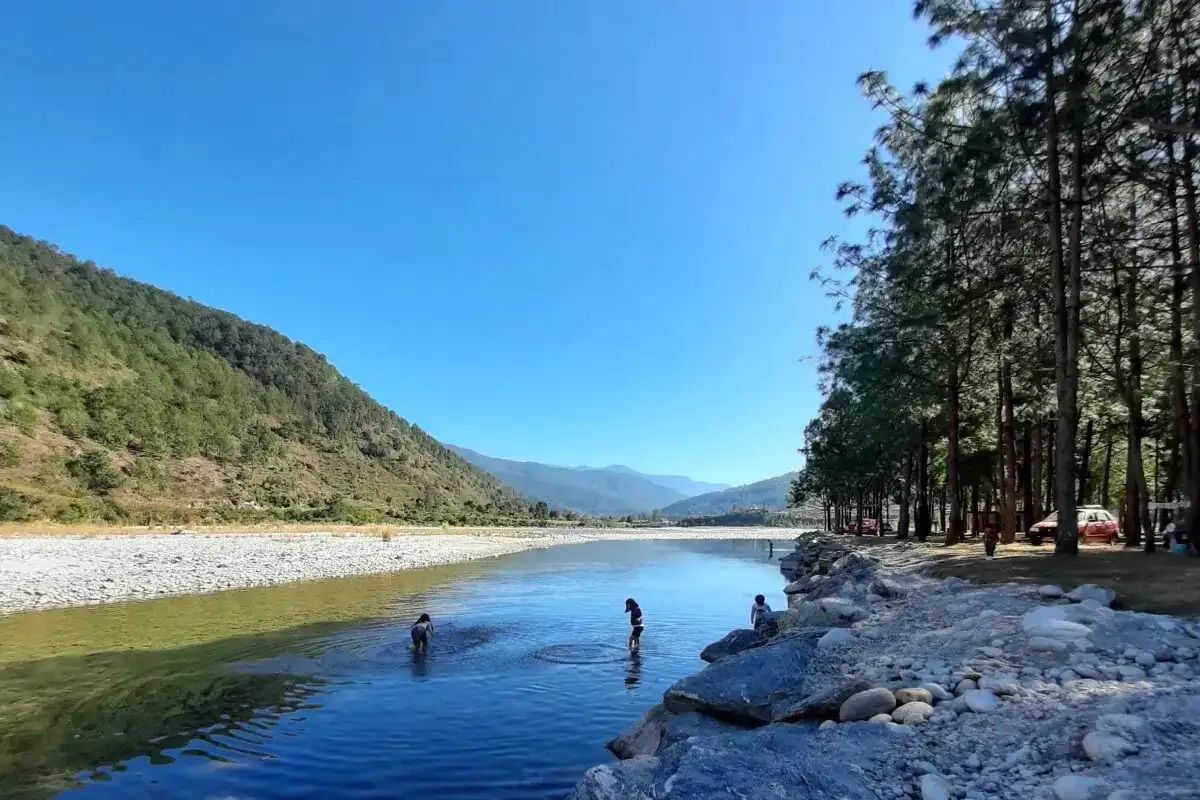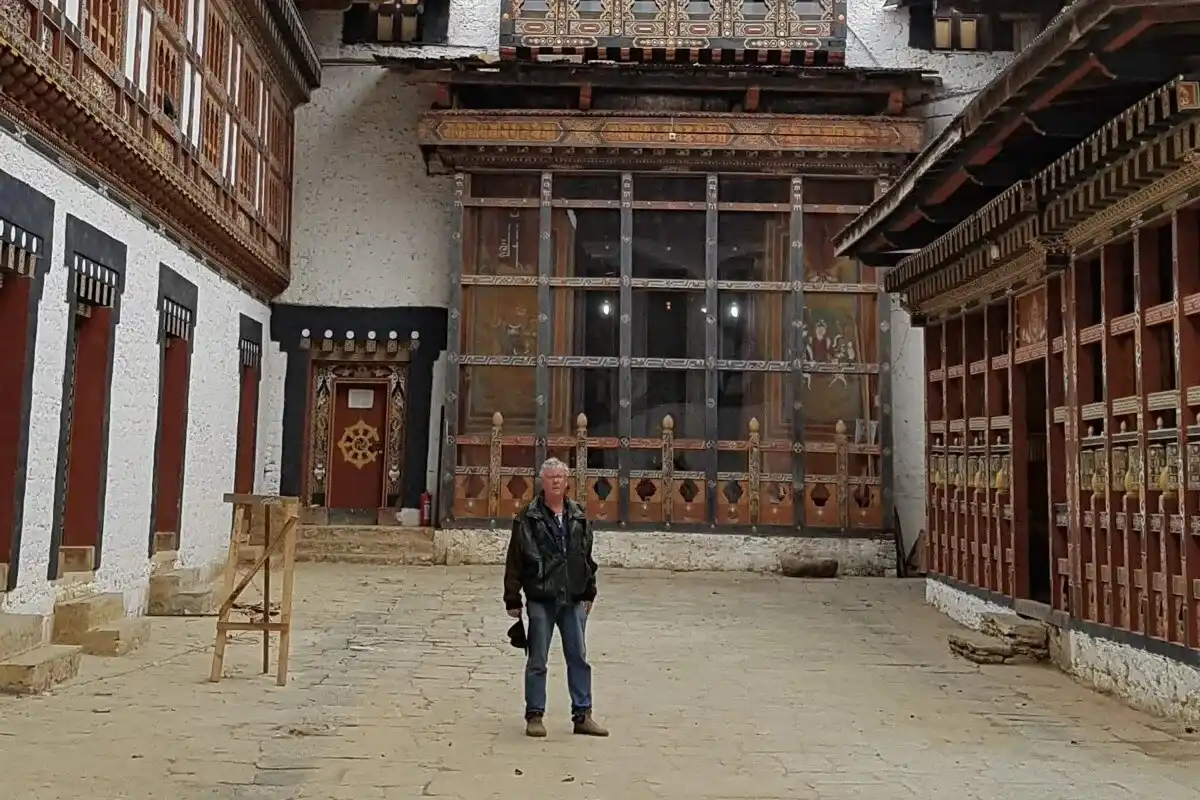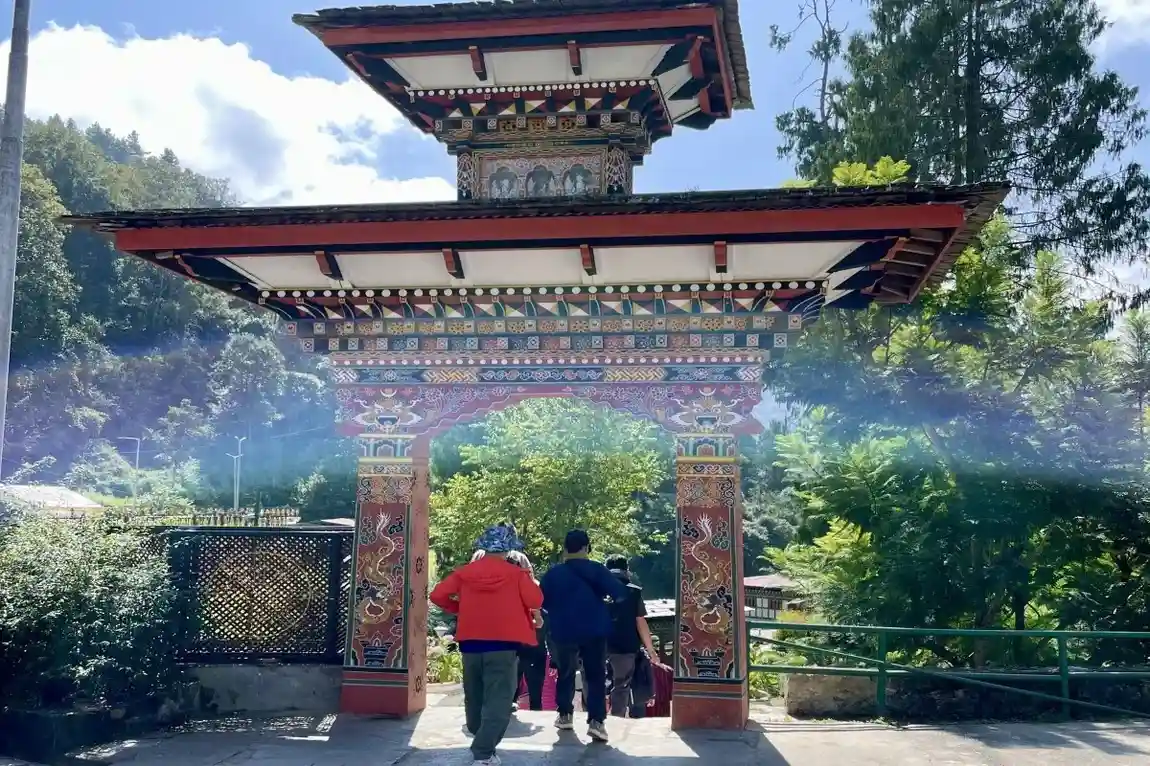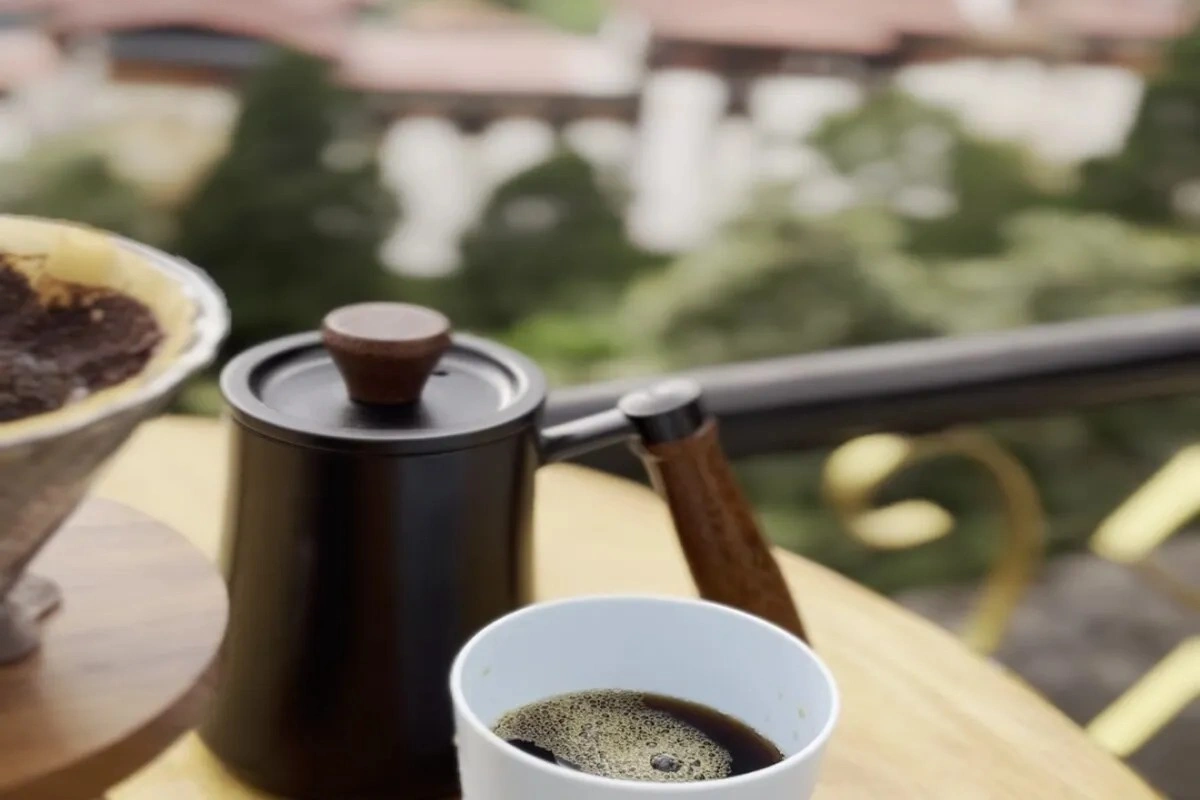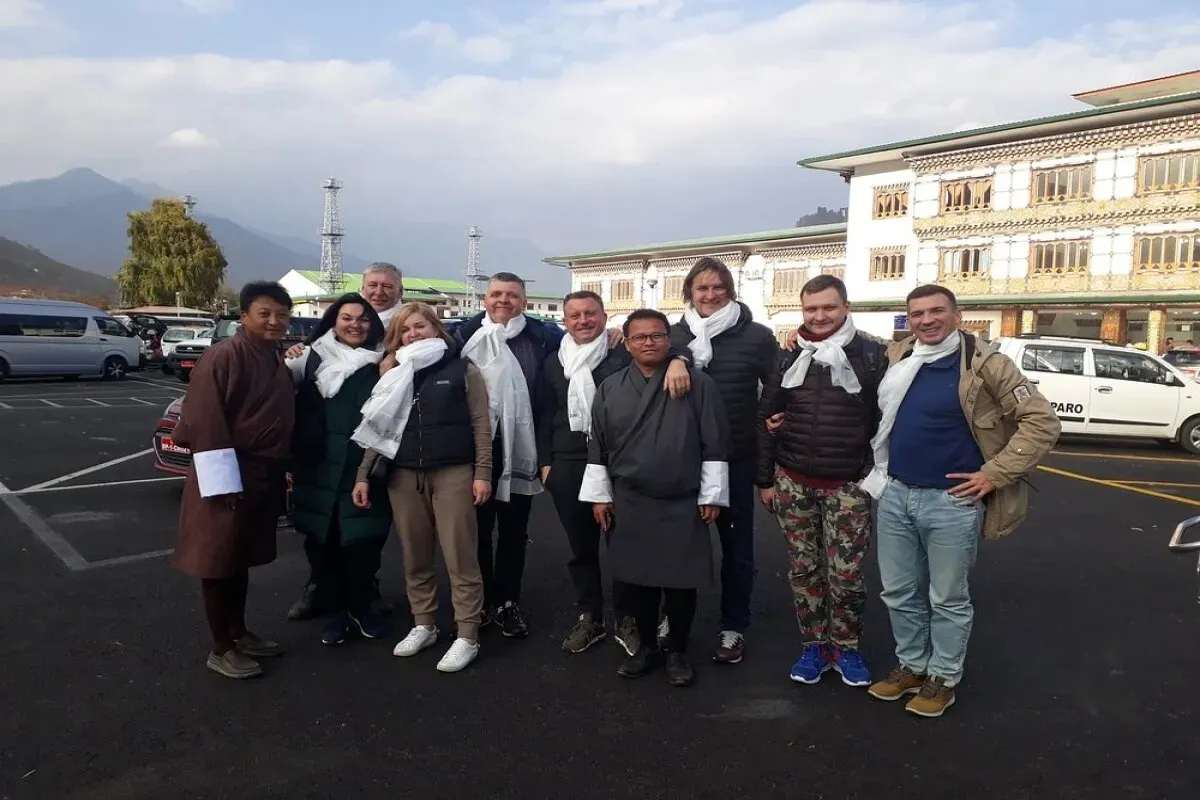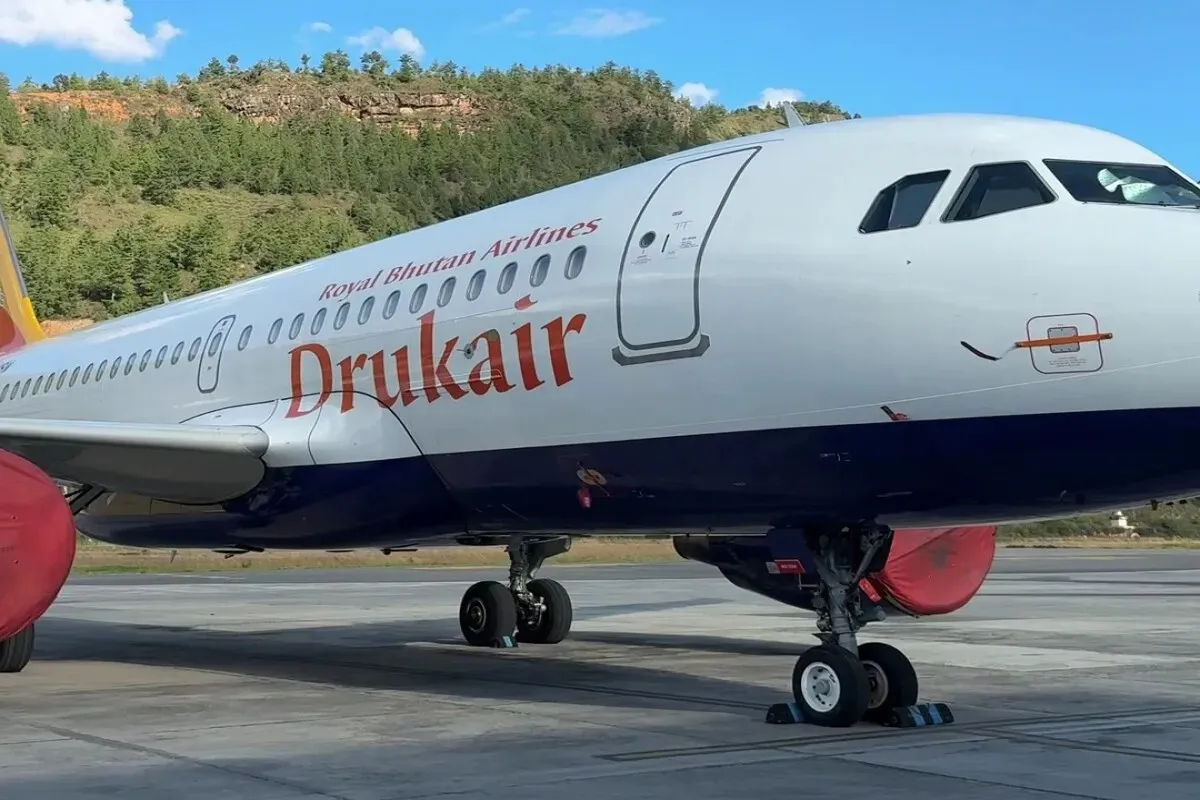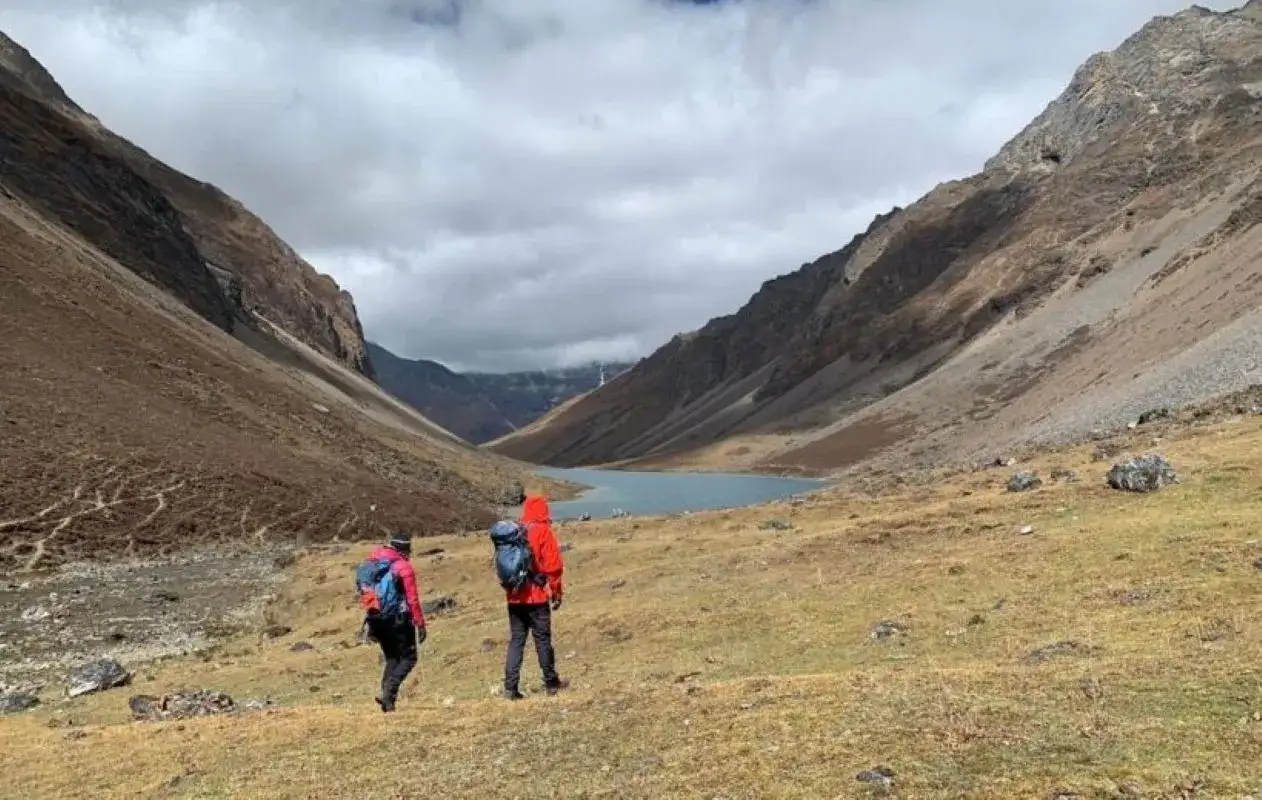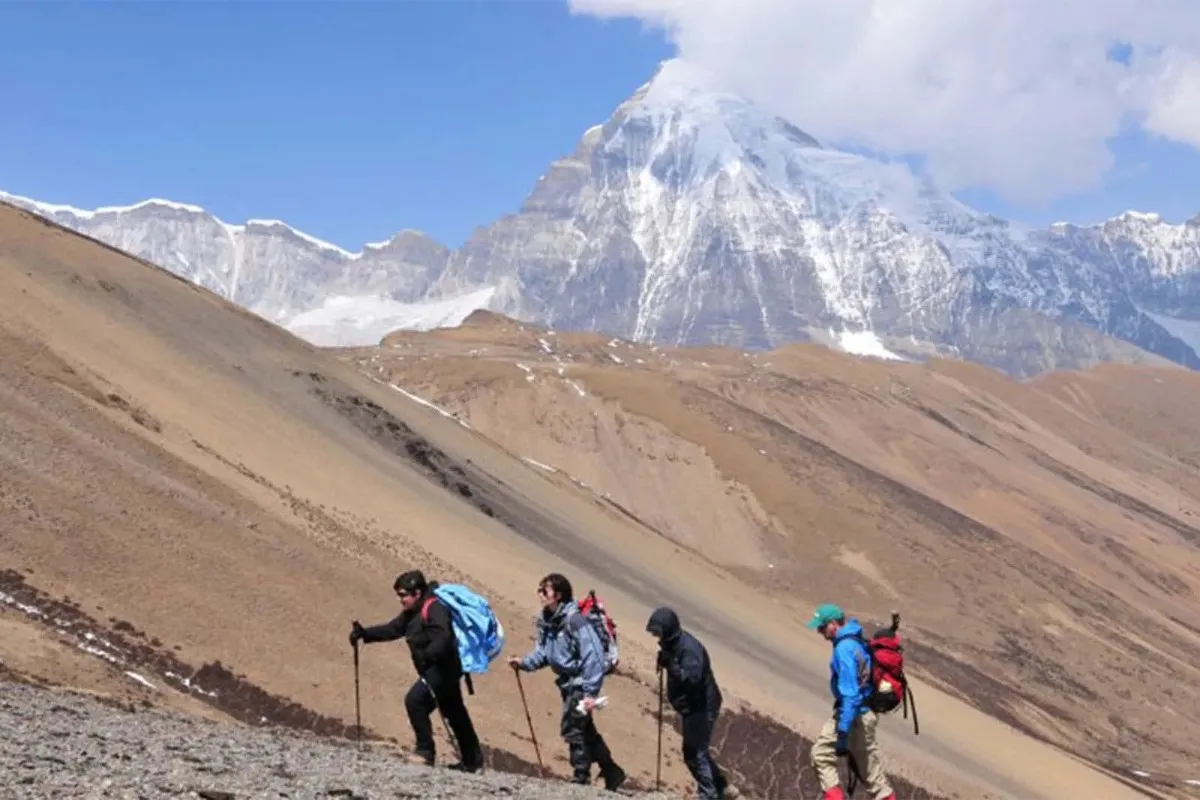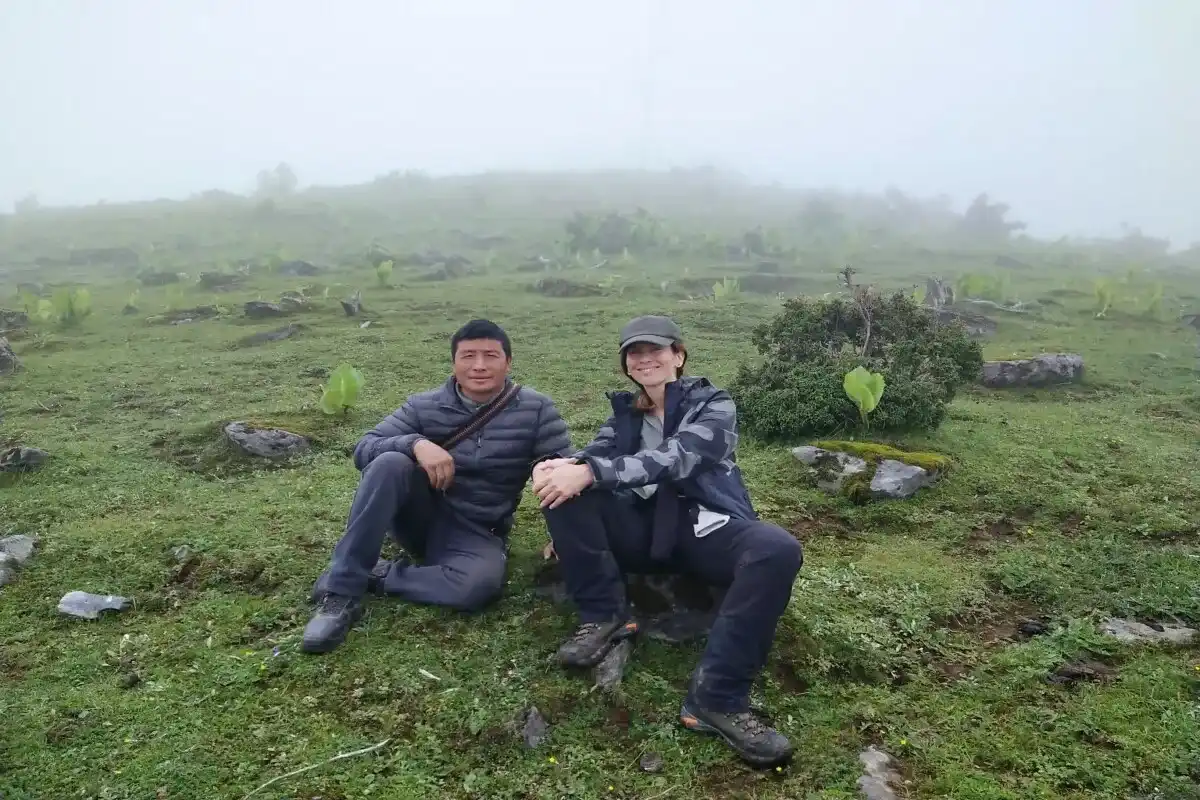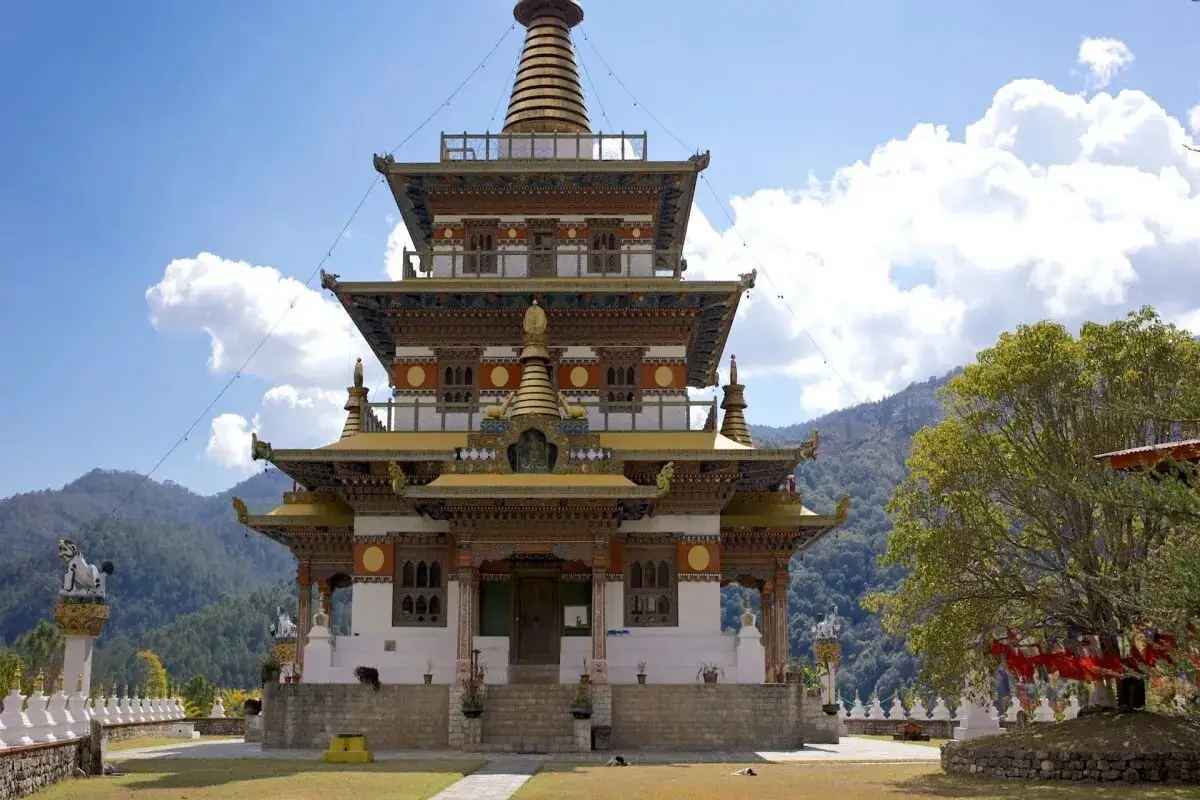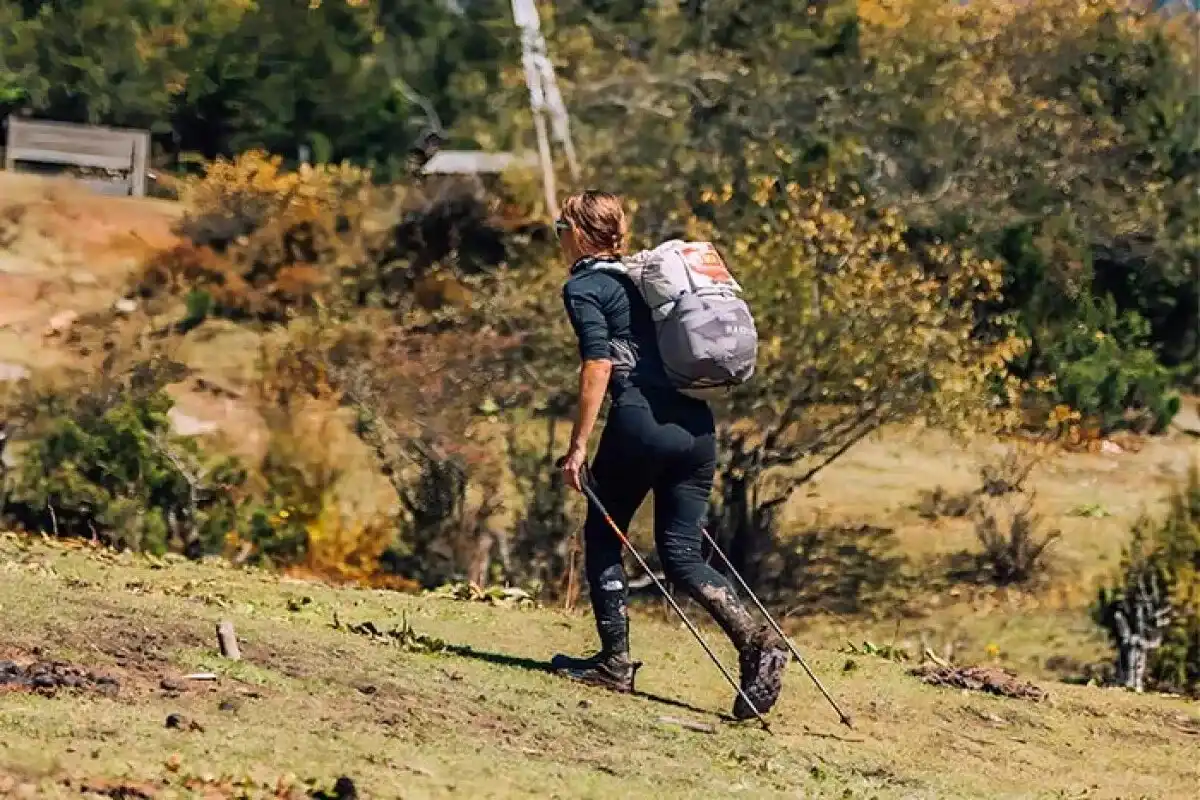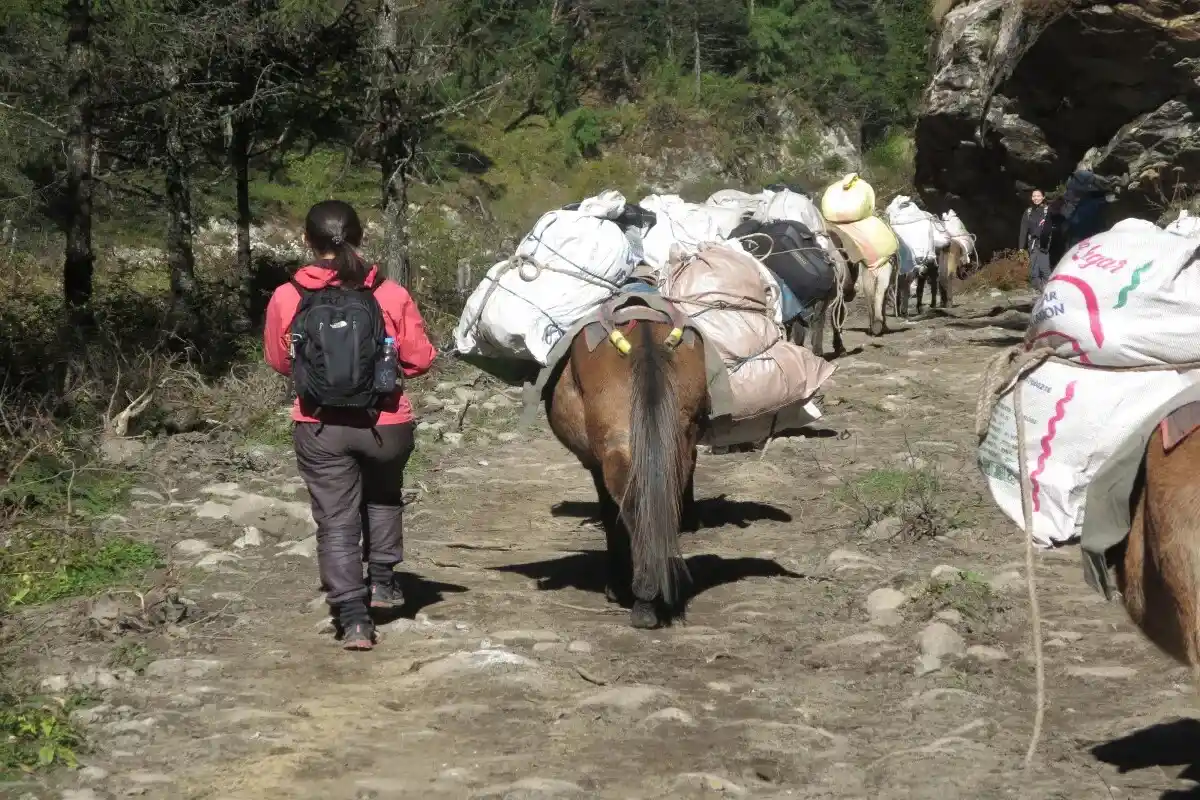Trans Bhutan Hike - 5 Days
The Trans Bhutan Hike is one of the richest ways to see Bhutan with all its nature, depth of culture, and peaceful flow of time. The trail has been modernised since it used to be the main path on which monks, traders, and royal messengers passed through the kingdom on their way to the east. It now presents an exclusive chance of going through the woods, villages, rice fields, and holy monasteries, and thus connecting the past with the present in Bhutan. Regardless of whether you are a nature lover, adventurer, or are fond of cultural travel, the Trans Bhutan Hike is a trip of a lifetime that will take you through the middle of Bhutan.
Highlights
- Immersive Cultural Encounters
- Spiritual Journey through Sacred Sites
Trip Overview
The Trans Bhutan Trail stands out as being greater than merely just a mountain walk; it is a journey that links centuries of history together with the modern lives of the Bhutanese. The explorers come across traditional communities still closely connected with nature, see ancient temples with monks performing rituals daily, and footpaths that have been used by generations. Each spot reflects natural splendour with cultural richness. There is a change of scenery, pine woods are replaced by high passes. The Trans Bhutan Trail is still being developed and offers travellers a quiet path where they can enjoy nature without the noise of popular trekking spots . Features of nature, spirituality, and local life are all present in this trail to make the nature of the trek unique in its own way.
Major highlights of the hike
You will be travelling accross the hidden mountain pathways passing through the western and central valleys of Bhutan, allowing one to stroll in contemplation and spend time in breathtaking scenery. The path crosses sacred temples, traditional farm houses and roads where the prayer flags have been erected. In this journey, travelers get to experience the accommodation of locals, get to eat locally prepared food and visit the clean sides of Bhutan, which have not been hit by the modern tourist activities. At every single step, they are making their relationships with nature and culture stronger.
Immersive Cultural Encounters
Some of the key benefits that one is likely to enjoy by undertaking a Trans Bhutan Hike include the privilege to socialize with people in the area. The hikers would be welcomed into inaccessible villages along the way, where people still live in farmhouses and are used to following the traditions. The opportunity to talk to people, to taste homemade food, and to watch ordinary lives can help a visitor to understand Bhutanese culture in the form that cannot be adulterated and is most authentic. These authentic experiences turn the pilgrimage into a cultivated level of exchange.
Spiritual Journey through Sacred Sites
The path cuts through land of extreme spiritual contents and passes monasteries, sacred temples and narrow passages across mountains adorned with the white flitting prayer flags. Tourists are exposed to monks in a state of meditative ritual, and give in to the ancient sound of ritual chant reverberating the inner hallways of reverent temples, soaking up a general sense of serenity and consistency that is the spirit of Bhutanese Buddhism. Although trips to dzongs and meditation points can give a detailed historical background, they also allow the travellers to step back and practise contemplation during the tour. This spiritual aspect changes the hike into a soul renewal activity that is not simply physical work.
Conclusions
The five-day Trans Bhutan Hike goes beyond being just a regular adventure; it is a monumental exploration of Bhutanese culture, peaceful landscape, and religious nature. To or through the sacred dzongs in Paro and Punakha, down forest tracks and remote villages, the hikers experience a disarmingly wholesome and spiritual experience. They walk the same paths taken by monks, merchants, and kings, plunging into the worlds that have been left untouched and pristine. By meeting friendly locals, tasting their food, and seeing a community that cares for the environment, hikers gain new experiences every day, like misty mountain views, colourful prayer flags, and the quiet peace of nature . Hence, the trek is the best way to explore the beauty of Bhutan with a lot of respect and moderation to suit personal interests. The experience is short-lived, but the memories last forever; there is a deep sense of peace that follows the participants back into their residence.
The Trans Bhutan Trail stands out as being greater than merely just a mountain walk; it is a journey that links centuries of history together with the modern lives of the Bhutanese. The explorers come across traditional communities still closely connected with nature, see ancient temples with monks performing rituals daily, and footpaths that have been used by generations. Each spot reflects natural splendour with cultural richness. There is a change of scenery, pine woods are replaced by high passes. The Trans Bhutan Trail is still being developed and offers travellers a quiet path where they can enjoy nature without the noise of popular trekking spots . Features of nature, spirituality, and local life are all present in this trail to make the nature of the trek unique in its own way.
Major highlights of the hike
You will be travelling accross the hidden mountain pathways passing through the western and central valleys of Bhutan, allowing one to stroll in contemplation and spend time in breathtaking scenery. The path crosses sacred temples, traditional farm houses and roads where the prayer flags have been erected. In this journey, travelers get to experience the accommodation of locals, get to eat locally prepared food and visit the clean sides of Bhutan, which have not been hit by the modern tourist activities. At every single step, they are making their relationships with nature and culture stronger.
Immersive Cultural Encounters
Some of the key benefits that one is likely to enjoy by undertaking a Trans Bhutan Hike include the privilege to socialize with people in the area. The hikers would be welcomed into inaccessible villages along the way, where people still live in farmhouses and are used to following the traditions. The opportunity to talk to people, to taste homemade food, and to watch ordinary lives can help a visitor to understand Bhutanese culture in the form that cannot be adulterated and is most authentic. These authentic experiences turn the pilgrimage into a cultivated level of exchange.
Spiritual Journey through Sacred Sites
The path cuts through land of extreme spiritual contents and passes monasteries, sacred temples and narrow passages across mountains adorned with the white flitting prayer flags. Tourists are exposed to monks in a state of meditative ritual, and give in to the ancient sound of ritual chant reverberating the inner hallways of reverent temples, soaking up a general sense of serenity and consistency that is the spirit of Bhutanese Buddhism. Although trips to dzongs and meditation points can give a detailed historical background, they also allow the travellers to step back and practise contemplation during the tour. This spiritual aspect changes the hike into a soul renewal activity that is not simply physical work.
Conclusions
The five-day Trans Bhutan Hike goes beyond being just a regular adventure; it is a monumental exploration of Bhutanese culture, peaceful landscape, and religious nature. To or through the sacred dzongs in Paro and Punakha, down forest tracks and remote villages, the hikers experience a disarmingly wholesome and spiritual experience. They walk the same paths taken by monks, merchants, and kings, plunging into the worlds that have been left untouched and pristine. By meeting friendly locals, tasting their food, and seeing a community that cares for the environment, hikers gain new experiences every day, like misty mountain views, colourful prayer flags, and the quiet peace of nature . Hence, the trek is the best way to explore the beauty of Bhutan with a lot of respect and moderation to suit personal interests. The experience is short-lived, but the memories last forever; there is a deep sense of peace that follows the participants back into their residence.
Short Itinerary
Arrive in Paro, visit Rinpung Dzong and National Museum, stroll in Paro town
Drive to Dochula Pass, enjoy Himalayan views and forest trail hike to Thimphu
Cultural hike from Toeb Chandana to Punakha, visit Punakha Dzong
Highland hike from Pele La Pass, explore Trongsa Dzong
Local excursion or temple visit, depart from Bhutan or extend trip
Trans Bhutan Hike Itinerary
At the Paro International, you will be received by your guide, who will drop you off to your hotel. Paro is a beautiful valley, with surrounding hills covered in tree forests and traditional houses and agricultural fields, where you will find yourself exposed to the first official point of engagement. Once you get settled, the first attraction of the day would be Rinpung Dzong, a fortress which overlooks the Paro River. After this, you would be taken to the National Museum, which offers some insight into the spiritual traditions, history, and natural culture of Bhutan. Late in the afternoon, you can undertake a light visit to Paro town or option to have a rest in your hotel before dinner.The first day is planned to be slow and easy to help you adjust and begin the trip without problems. Later on in the evening, a traditional Bhutanese dinner made with locally sourced ingredients is served, followed by a briefing by your guide concerning the trek to be the case, hence opening up the stage, both mentally and physically, to prepare you for the journey to come.
Get out of Paro early and move on through a beautiful valley to Dochula pass at 3,100m above sea level. On reaching the site, enjoy the views of the entire Himalayan range with a row of 108 white chortens standing high above a blue sky. At this point, start a hike in the deep forests of the rhododendron, pine, and fir. Rural areas are all peaceful with birdsong, the waving of prayer flags, and wide panoramas of local mountains. It goes through agricultural land and the small village houses as one goes down gently. It ends at the borders of Thimphu Valley, which is a few minutes drive from your accommodation. The rest of the day can be spent resting or just walking around Thimphu before dinner and the evening.
After having a breakfast, you will begin your journey eastward toward Punakha. The journey begins with a short drive, and you enjoy a beautiful walking trail starting at Toeb Chandana.This path flows through villages, rice terraces, and through quiet paths in the forest and allows getting acquainted with local farmers and a close acquaintance with the rural community of Bhutan. Stop at the picnic spot and enjoy picnic by the natural surroundings, then proceed to the Punakha Valley. In this case, we come to visit Punakha Dzong, one of the tallest monasteries of Bhutan, built between the two rivers. End the day by residing in a local lodge or guesthouse whose tranquil atmosphere and breathtaking landscapes of the entire valley make one reflect on a well-spent day trip.
Leave Pele La Pass, in the heart of Bhutan, and start a highland adventure through meadows, grazing lands, and easy mountain trails. The air is still clean, and you can see a cloud of prayer flags waving beside the path that you walk in prayerful, silent movement. Fairly uncongested with tourists, these preliminary miles permit considerable introspection. Arrive later in the day and explore Trongsa, whose imposing Trongsa Dzong, a royal fortress that is perched on the side of the mountain, is a sight to see at the Trongsa. Learn inside its walls about the monarchy and the early history of Bhutan. You will have a overnight stay in a hotel and have a peaceful night sleep.
Depending on the time that you have, you can make a little excursion around your place of accommodation or visit a local temple. Then you will head back to Paro by road or domestic flight. Our company will arrange these logistics. There may be possible extra tours to Bumthang or other eastern destinations, should time allow. Rather than these extensions, farewell to the quiet mountains of Bhutan, friendly people, and holy paths. Not very heavy, this trek creates a deep connection with you and the land and spirit of Bhutan experience that will leave with you long after you have left home.
Know Before You Travel
- :
FAQs for Trans Bhutan Hike
You need a visa and all necessary permits for your trip. These documents can not be received on the day of your arrival, so they must be processed before coming here. After you book a trip with us, we will manage these papers for you. Your Bhutan visa is arranged by Orrog as part of the package.
The main way to come to Bhutan is through Paro International Airport, which is well-connected to cities like Bangkok, Delhi, Kathmandu, and Singapore. Most people arrive by air, but if you plan to come via road, you can enter through Phuentsholing, located on the southern border with India, which is the most commonly used entry point.
It is recommended to apply for the visa at least 20 days before your planned departure date so that there is enough time for processing your Bhutan visa, finalizing your itinerary, and arranging your guides and transportation. Although visa processing itself is relatively fast once payment is received, early preparation helps avoid delays and ensures availability, especially during peak seasons (spring and autumn).
You don’t require a passport-size photo for the visa, but it is wise to carry at least 2–4 recent passport-sized photographs during your trip. These may be needed for local permits, registration, or when applying for a local SIM card upon arrival in Bhutan.
Yes, you can lengthen your stay in Bhutan either before or after your trip. Bhutan’s tourism model requires visitors to pay a Sustainable Development Fee (SDF) and a daily package cost, so any extra days will involve additional charges. Extensions are a great opportunity to explore cultural sites in Paro, Thimphu, or even add another short trip or day hike.
Yes, Bhutan requires full tour payment in advance before your visa can be processed and issued. The government of Bhutan regulates this policy to ensure that all travel arrangements are confirmed through a licensed Bhutanese tour operator. We are a licensed tour operator that ensures you have everything you need for a trouble-free trip.
Any personal expenses are not covered in the package like:
- Tips for your guide and other staff
- Bottled drinks and snacks(personal expense)
- Souvenirs or local crafts
Credit cards are easily accepted in major cities like Paro and Thimphu. But in remote areas, you may not have access to a card or an ATM. So, it is best to carry some cash before heading for the trip.
Tipping is not mandatory, but it is a widely appreciated gesture and a customary way to show gratitude for good service. The tipping guideline would be to give USD 5-10 per day as a tip for the guides and other staff.
Paro International Airport is the only international airport in Bhutan. It is well connected by flights from cities like Bangkok, Delhi, Kathmandu, and Singapore.
Yes, airport pick-up and drop-off are included in the package. We will have your guide and driver meet you at the airport and transport you to your hotel.
While Bhutan's roads are mostly paved, some parts are narrow, winding, and occasionally affected by weather. However, we ensure your travel is safe, well-maintained, and driven by an experienced professional throughout the journey.
The Bhutanese Ngultrum is used in Bhutan. All local transactions during the trip will be in BTN.
US Dollars (USD) are generally accepted at larger hotels, souvenir shops, and tour operators, particularly in Paro and Thimphu. However, it’s advisable to convert your currency to BTN for general purchases in rural areas. Other currencies like the Euro or the Pound are not commonly accepted directly.
No, credit or debit cards are not accepted on the trip, as it takes you through remote regions with no banking or electronic payment access. All trip-related payments like accommodation, meals, permits, etc, are paid in advance.
You can exchange foreign currency at the Paro International Airport, at banks, or through licensed money changers in cities like Thimphu and Paro. It's best to exchange enough cash before heading out on the trip.
The national language is Dzongkha, but many Bhutanese also speak English. If you speak English and are worried about communicating with the local people, you will have your guide as a translator.
Yes, all licensed tour guides in Bhutan are required to speak fluent English. Many are also trained in other languages such as German, Japanese, or French. Communication during the trip will be smooth and clear in English.
Most signboards, tourist maps, and information brochures are written in English, especially in tourist destinations like Paro, Thimphu, and trailheads. Directional signs along routes are often labeled in both Dzongkha and English.
No, learning Dzongkha is not at all needed for the trip, but knowing a few basic words like "Kuzu zangpo la" (Hello) or "Kadrinche la" (Thank you) is a good way to interact with the locals.
Language barriers are minimal, as your guide will handle all communication with locals and support staff. Your guide will translate for you during your interaction with the locals.
To greet people, you can greet with locals “Kuzu zangpo la” (Hello) by performing a slight bow. Most common greetings include physical greetings, such as shaking hands less visible, especially in rural areas.
Yes, but remember to seek permission, especially when taking photos of monks, locals, or temples. Please note that clicking photos is not allowed at most religious sites.
Visitors should dress modestly and respectfully. This means:
- Covering shoulders and knees
- Removing hats and sunglasses
- Not wearing shorts or sleeveless tops
This applies to both men and women.
Yes, Bhutanese society is deeply rooted in Buddhism and tradition. Here are some key taboos:
- Do not point your feet at people or sacred objects
- Never touch anyone on the head, as it is considered sacred
- Walk clockwise around temples, stupas, and religious monuments
- Avoid public displays of affection
While gifts are not expected, they may be accepted graciously if given with respect. It is advisable to consult with the guide before giving out anything.
Bhutan typically uses Type C, Type D, and Type G electrical outlets. Standard safe voltage is 230V and frequency is 50Hz; therefore, ensure that your equipment is compatible with this voltage.
Indeed, it is highly advised to take along a universal travel adapter, particularly one to fit a variety of types of plugs, because plugs can be different in a hotel or a guesthouse.
Bhutan follows Bhutan Time (BTT), which is UTC/GMT +6 hours. This time zone remains consistent throughout the year.
No, Bhutan does not observe daylight saving time. The country maintains the same time year-round.
Bhutan is 30 minutes ahead of India. For example, 12:00 PM in India is 12:30 PM in Bhutan.
Yes, souvenirs can be bought in Paro or Thimphu before or after the trip.
Some popular souvenirs include hand-woven textiles (kira and gho fabric), prayer flags, thangka (religious scroll) paintings, handmade paper products, traditional masks, and Buddhist artifacts.
You can do some gentle bargaining in local street markets. However, in government-run shops and fixed-price stores, prices are usually non-negotiable.
Yes, you can easily purchase a SIM card upon arrival in Bhutan. We will assist you with the process, and you'll need a passport copy and a passport-sized photo.
No, internet access is not available during the trip. However, Wi-Fi is available in hotels in Paro and Thimphu before and after the trip.
Along our trip, we will go through different places. So, we will stay in accommodation that is available, ranging from boutique wellness resorts and eco-lodges to comfortable 3-star hotels and trekking campsites.
Yes, Bhutan has a growing number of wellness-focused retreats and luxury lodges that offer spa, yoga, and meditation programs. So, you will be staying in wellness resorts to lift your overall experience.
Yes, most accommodations provide hot water and heating. During treks, basic facilities are available, but comfort varies depending on altitude and remoteness.
You need to be moderately fit for activities like hiking, cycling. We can tailor itineraries based on your fitness level.
Absolutely, our programs suit all experience levels, from beginners to advanced practitioners.
Our guides are trained in basic first aid and altitude-related issues. They will ease you, and an emergency evacuation will be arranged if necessary.
Depending on the tour, you experience yoga, meditation, traditional Bhutanese hot stone baths, herbal treatments, and spiritual rituals guided by monks.
Yes, our retreats include sessions with monks or lamas for mindfulness, Buddhist teachings, and guided meditations.
We provide nutritious, mostly organic meals, often prepared with locally grown ingredients. If you have any special diet plan, please inform us beforehand so that it can be accommodated.
Yes, vegetarian, vegan, and detox-friendly menus are available on request, especially at wellness-focused properties.
We offer day hikes, cycling, nature walks, rafting, bird watching, and cultural village stays, often integrated with wellness themes in Bhutan.
Yes you’ll hike daily, typically 4–7 hours a day. However, routes can be customized with rest days.
The package includes accommodations, all meals, professional guides, entrance fees, wellness sessions, equipment (for treks/yoga), and all transport.
It’s best to book 2 to 4 months in advance, especially during peak trekking or festival seasons.
The Internet is available in most hotels and wellness centers, but connectivity is limited or unavailable during treks or in remote areas.
Reviews & Ratings
-
Guarantee -
Thimphu,Bhutan -
975+17160228
Ready to Explore Bhutan?
Start your journey today and discover the magic of Bhutan with our expert guides and carefully crafted tours.
Book This Trip
-
No booking or credit card fees -
Best price guarantee -
Full customize trip
Ask a Question
Feel free to ask us anything about this tour. A travel expert will then get back to you as soon as possible
Ready to Explore Bhutan?
Start your journey today and discover the magic of Bhutan with our expert guides and carefully crafted tours.

